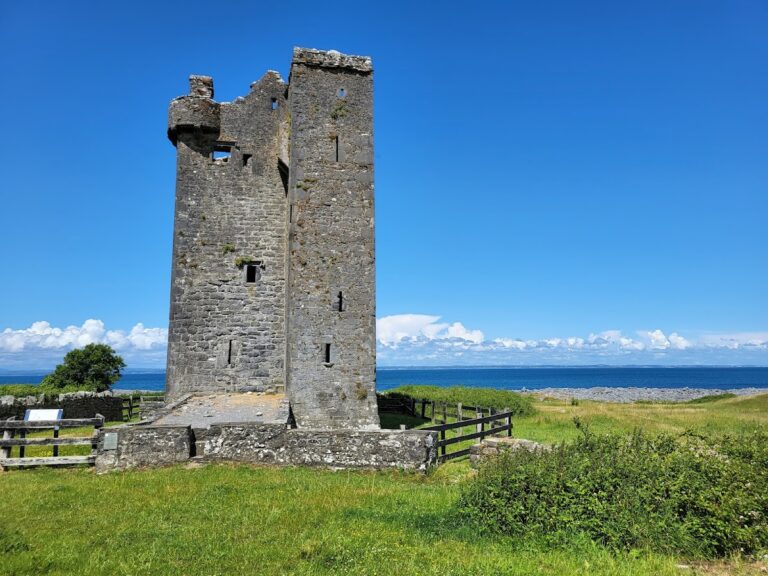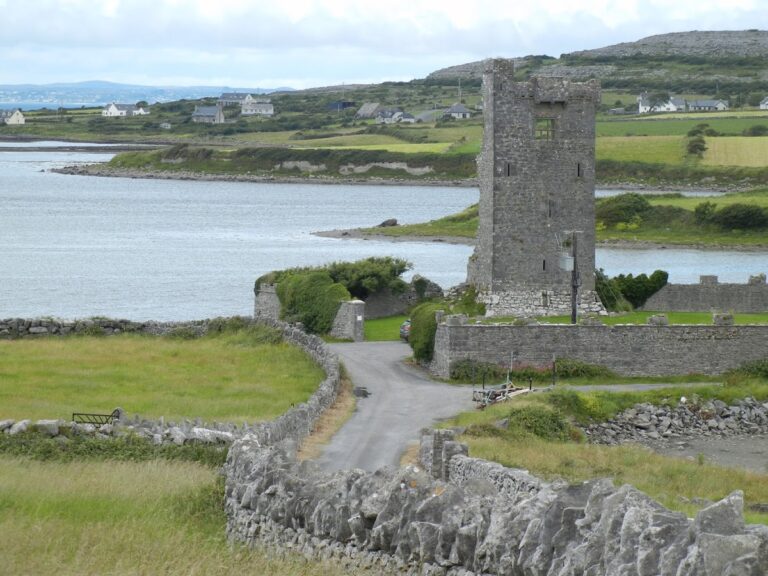Ashford Castle: A Historic Irish Castle and Hotel
Visitor Information
Google Rating: 4.7
Popularity: Medium
Google Maps: View on Google Maps
Official Website: www.ashfordcastle.com
Country: Ireland
Civilization: Medieval European
Remains: Military
History
Ashford Castle, situated near the village of Cong in Ireland, was originally constructed in 1228 by the Anglo-Norman de Burgo family, also known as the House of Burke. Their dynasty controlled the castle for more than 350 years, establishing it on the edge of an earlier monastic site that lay close to the border between County Mayo and County Galway.
In 1589, the castle changed hands amid conflict when the English official Sir Richard Bingham, Lord President of Connaught, captured it following a fierce battle with the de Burgos. Bingham fortified part of the castle’s precincts by adding a secure enclosed area. The estate later passed to the Browne family through a Royal Grant dated either 1670 or 1678. In 1715, the Brownes founded the Ashford estate and constructed a hunting lodge nearby, designed to evoke the style of a 17th-century French chateau. Their family coat of arms, featuring double-headed eagles, was prominently displayed on the roof of this lodge.
By the late 18th century, members of a branch of the Browne family still occupied the castle. Historical documents record a Thomas Elwood as their agent living onsite in 1814. In 1852, the estate was purchased by Sir Benjamin Lee Guinness, who considerably enlarged the property to cover approximately 26,000 acres. He undertook extensive improvements including new roads and the planting of thousands of trees.
Following Sir Benjamin’s death in 1868, the estate was inherited by his son Arthur Edward Guinness, known as Lord Ardilaun. He commissioned major expansions, adopting the neogothic style to unify earlier elements of the castle. This included linking the 18th-century eastern wing with two medieval towers on the west, and adding battlements along the entire structure. Lord Ardilaun was actively involved in the local economy, supporting steamboat services on nearby Lough Corrib and engaging in various development projects, although some initiatives such as the Cong Canal did not succeed. During the turbulent Land Wars of the late 19th century, he was regarded as an “improving” landlord.
After Lord Ardilaun, the estate passed to his nephew Ernest Guinness. In 1939, ownership transferred to Noel Huggard, who transformed Ashford Castle into a hotel with a focus on country sports like fishing and shooting. The castle entered a new phase in 1970 when John Mulcahy acquired it, initiating a thorough restoration that doubled its size, added a golf course, and enhanced the estate grounds.
In 1985, an Irish American consortium including investors Chuck Feeney and Tony O’Reilly purchased Ashford Castle. This group later sold the property in 2007 to Galway-based developer Gerry Barrett for €50 million. Despite entering receivership in 2011, the castle’s operations continued. Two years later, it was acquired by Red Carnation Hotels with commitments to extensive refurbishment and the preservation of around 160 jobs. By 2015, following a €47 million restoration, Ashford Castle reopened with substantial work including the replacement of all 820 windows, a new lead roof, and repointing of the stone masonry.
Throughout its history as a residence and hotel, Ashford Castle has welcomed a notable roster of guests, among them King George V and Queen Mary, members of the British and American political and entertainment worlds such as U.S. President Ronald Reagan, actors John Wayne and Robin Williams, musicians John Lennon and George Harrison, and international royalty including Prince Rainier III and Princess Grace of Monaco.
Remains
Ashford Castle presents a complex architectural layering that spans over seven centuries, reflecting its continuous adaptation and enlargement. The original structure dates to the early 13th century, evidenced by two medieval towers that stand on the west side of the building. These towers, built by the de Burgo family, are integrated into the modern castle fabric, offering a direct link to its earliest phase.
Constructed primarily from local stone, these medieval towers formed defensive strongpoints typical of Anglo-Norman fortifications. Their sturdy masonry and elevated positions would have provided both protection and surveillance over the estate and surrounding lands. Though later additions altered the castle’s profile, these towers remain in situ as substantial remnants of the original fortress.
In the 18th century, the Browne family built a hunting lodge on the estate, styled after a French chateau of the previous century. This lodge is notably adorned with the family’s heraldic device, the double-headed eagle, which decorates the roof area. This emblem serves as a visual hallmark of the Browne ownership and reflects the period’s aesthetic influences and aristocratic ambitions.
The 19th century brought extensive Victorian-era expansions initiated by Sir Benjamin Lee Guinness and continued by Lord Ardilaun. Guinness added two large extensions in the Victorian style, markedly increasing the castle’s size. Lord Ardilaun engaged architects James Franklin Fuller and George Ashlin to undertake a comprehensive rebuilding of the west wing. This work connected the older structures with the two medieval towers on the western side and introduced battlements around the entire castle. These battlements, while medieval in inspiration, are characteristic of 19th-century neogothic revival trends intended to evoke medieval grandeur.
The castle sits within an extensive estate of roughly 26,000 acres, which includes vast woodlands developed by Lord Ardilaun. The grounds were further enhanced in the 20th century with the addition of a golf course, part of the mid-century expansion and restoration efforts under John Mulcahy.
In the most recent phase of conservation completed in 2015, a large-scale restoration addressed key preservation needs. This included replacing all 820 windows with careful attention to historic character, installing a new lead roof for durability and authenticity, and repointing the stone masonry to protect the building’s structural integrity. These restorative measures ensured the survival and continued use of the castle as a significant historic and architectural complex.
Today, Ashford Castle functions as a five-star hotel with 83 bedrooms, including six suites, standing as an exemplar of layered historical construction. Its location on the shores of Lough Corrib, combined with the integration of medieval, Georgian, Victorian, and neogothic elements, offers a vivid architectural record of evolving tastes and social histories tied closely to Irish nobility and landed estates.










